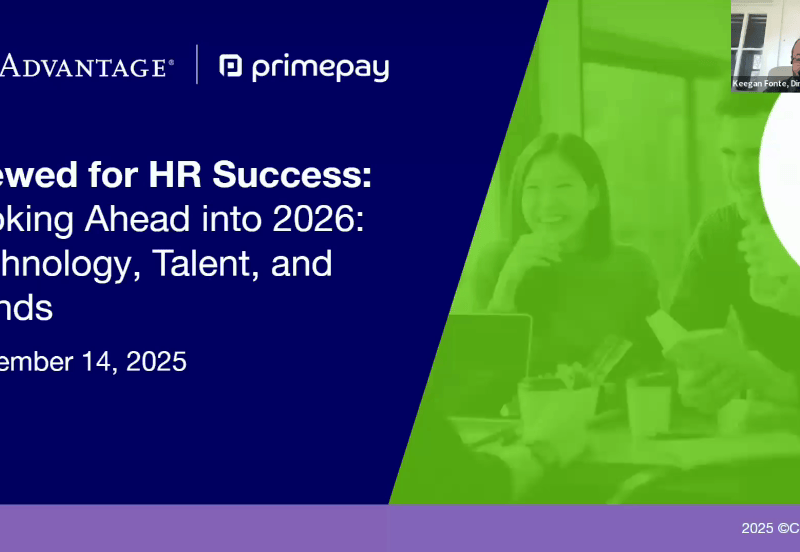Just like plants, employees also need the right environment and care to thrive. You can’t expect them to flourish if you don’t provide them with the necessary resources.
That’s where the hire to retire process comes in.
Considering the hire to retire process can ensure that new hires and seasoned employees alike are well-cared for and stay with your company for the long haul.
But don’t worry, you don’t need to have a green thumb to make this work. Whether you’re a small business owner, a large enterprise, or an HR professional, we’ve got a few tricks up our sleeves to help you retain your employees and keep them blooming.
So, get ready to take notes and watch your workforce flourish.
What is the Hire to Retire Process?
The hire-to-retire process is a part of human resources management that focuses on the employee journey with a company. It can also be referred to as the employee lifecycle. It is the process of tracking employees from the moment they are hired until the end of their employment with the company.
Many companies will use human resource management software to help manage this process.
Key Components to the Hire to Retire Process
The key components of the hire-to-retire process include hiring, managing, retaining, transitioning, and retiring. We will over each of these in more detail below.
- Hire: This stage involves activities like planning and recruiting, applicant tracking, and onboarding.
- Manage: This stage involves activities like payroll, hr compliance and training, time and attendance, and more.
- Retain: This stage involves activities like employee benefits administration, improving the employee experience and culture, employee engagement, employee performance, employee time off (PTO) policies, and more. Offering options like flex-time or earned wage access can help retain employees.
- Transition: This stage is where you help your employees plan for retirement by offering retirement benefits such as a 401K, Simple IRA, profit sharing, 403(b), 457, and more.
- Retire: This is the bittersweet moment of sending an employee off for retirement. This stage includes offboarding, which could involve transferring job responsibilities, deactivating certain access points, turning in equipment, and conducting exit interviews.
By prioritizing each of these stages, and adding to your current business processes, you can create a supportive and engaging work environment that encourages employee retention and growth.
Benefits of a Comprehensive Hire to Retire Process
A comprehensive hire to retire process allows your employees to follow a clear path for growth and development, which can lead to the following benefits:
Employee Retention
Employees are more likely to stay with a company if they feel valued. This is supported by a survey that states 94% of employees share they would stay at a company longer if it invested in learning and development.
Increased Performance and Productivity
A key purpose of the hire to retire process is to provide employees with the necessary support and resources to succeed at every stage of their employment. Equipping employees with the tools and resources they need to enhance their skills can increase motivation, productivity, and job satisfaction.
A formal onboarding program can play a critical role in this process, as it has been found to increase employee retention by 50% and boost productivity by 62%.
Lower Training and Talent Acquisition Costs
When you combine all the benefits of the hire-to-retire process, one of the major advantages is a reduction in training and recruiting expenses. Satisfied employees spread the word about their positive experiences, which could lead to less of a burden on your recruiting and HR team, and more employee referrals, ultimately, bringing on more talent.
And as mentioned above, when employees feel valued, they are more likely to stay with the company. So you don’t have to worry as much about the cost of replacing an employee, which can vary from 50% to twice their yearly salary, and this is just a conservative approximation by Gallup.
How to Create a Hire to Retire Process
Creating a successful hire to retire process involves several steps, including:
- Assessing Current State Of HR Processes: Evaluate key metrics, employee data, and the current state of your HR processes to help identify gaps, inefficiencies, and areas of improvement.
- Defining Roles and Responsibilities: Clearly define roles and responsibilities for each position and where they fit within the organizational structure to ensure everyone is aligned and understands their role in achieving the company’s goals.
- Recruiting: Develop a robust recruiting process to attract top talent and ensure that you are selecting the best candidates for each position.
- Onboarding: Make sure your or your HR department’s onboarding process makes new employees feel welcome, gets them up to speed quickly, and sets the tone for a positive employment experience.
- Performance Management: Establish a process to ensure that employees are meeting their goals, receiving feedback, and ensure that they clearly understand their path to continue growing and developing their skills.
- Career Development / Employee Training: Offer end-to-end career development and training opportunities to increase employee engagement, satisfaction, and retention.
- Succession Planning: Put a plan in place for key positions in the organization and reduce the risk of disruptions due to unexpected departures.
- Exit Interview: Conduct exit interviews and provide valuable feedback and insights into areas where the company can improve, and identify trends in employee turnover.
Best Practices Before the Hire
Finding great talent starts with a great job description. Here are some best practices for crafting the perfect one that’ll grab attention:
- Job Analysis: Performing a job analysis will give you some guidance as to what the exact role is that you need to be fulfilled and thus lay the groundwork for the job description.
- Develop a Catchy Title: Some candidates will quickly scan and move on if they don’t think your job title is what they’re looking for. Be descriptive, thorough, and realistic. Give the job seeker a considerable amount of information in the title to motivate them to read more.
- Include the Necessities: A good job description should include an overview of the responsibilities, requirements of the position (including skills, education, or special certifications), and whether the position is full-time, part-time, or seasonal. Begin the post with details about the job and mention your company towards the end. It’s not all about you. It’s about how the person can help your company reach its fullest potential.
- Capture Your Culture: In the meat of the description, describe how the particular role plays in your company mission and culture. You not only want to hire a person who has the right technical skills, but you want to also ensure he or she will be a great cultural fit.
- Don’t Overload the Requirements: Printing an exhaustive list of requirements and skills may deter a great candidate from applying. List your most important requirements and be open-minded if you decide to take the discussion further.
- Grammar Check: Would you feel comfortable applying to a job where the company spelled its own name wrong? Don’t rush things and publish just to get it done. Have a second or third set of eyes read over your posting.
- Keep Mobile in Mind: Many job seekers are using their phones to look for new positions on apps and job platforms like LinkedIn, Indeed, Glassdoor, you name it. To keep this audience in mind, stay away from lengthy paragraphs in your posting and instead opt for bullet points and sub-headers.
- Explain How to Apply: A great job description means nothing if you don’t have a quick, yet detailed explanation on how the candidate should actually apply. Do you want them to call, email, or visit your career page?
- Final tip: Be sure to factor in HR compliance to avoid any violations.
Best Practices During Employment
Great news! Your catchy job title did the trick. But it doesn’t end here. Follow these best practices during employment to optimize the employee experience:
- Engage Employees: By actively involving employees in decision-making and providing them with opportunities to provide real-time feedback on the hire to retire processes, you can create a culture of engagement that fosters loyalty and productivity.
- Review and Update Regularly: Review and update HR processes per feedback to ensure that they remain relevant and effective in meeting the changing needs of your business and employees.
- Ongoing Training and Development: Provide ongoing training and development opportunities for employees to not only improve their skills but also enhance job satisfaction and overall performance.
- Monitor and Adjust: Keep track of HR processes to identify areas for improvement and make necessary changes to ensure continued success.
Best Practices After the Exit
Unfortunate fact: your employees probably won’t be working at your business forever. Life changes, career moves, and other factors play into why your employees might make the switch. Yes, it’s devastating – especially if they were a star employee. But it also provides you with a great opportunity to learn. No matter if you have one employee or 100, exit interviews can provide you with that opportunity, so long as you structure the conversation right.
Here’s a general outline of how the process should work.
- The supervisor notifies whoever handles HR that the employee is terminating or transferring to another department.
- The supervisor encourages the employee to complete a questionnaire and schedule the exit interview.
- An HR manager sends a questionnaire to the employee and sets up the interview.
- During the interview, both parties confidentially discuss the information gathered from the questionnaire.
Because there is so much fear about coming forward with issues during employment, the exit interview is sometimes the best chance to get information.










